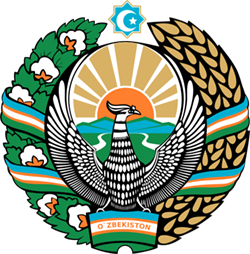On the work carried out to ensure the price stability of food products in the inner market.
30/04/2021 - 16:17 4964
On April 30 of this year in the "Wyndham" Tashkent hotel was held an open dialogue on the initiative of the National Association of electronic media on the theme "guaranteed provision of the population of the Republic with socially important types of food products and maintenance of price stability"

The downward trend in the price of basic food products in the world has changed from May 2020 year to the growth trend and is still preserved.
This situation occurred at the same time as a sharp increase in the spread of the global pandemic around the world in March-April 2020 year.
The prices of these products are formed in connection with changes in the foreign market conjuncture, as the possibility of providing the domestic consumer demand of the Republic on vegetable oil, sugar, meat and potato products, which are the main types of food products, is limited from the account of local resources.
According to the analysis of the state of demand and supply for these products in the world market, if there is a correlation between the demand and supply for wheat, meat and rice, the demand and supply in sugar and sunflower oil have acted in a specific way.
As a result, according to the UN’s Food and Agriculture Organization (FAO), in the period from March 2020 to February 2021 years, the Food Price Index increased by 24,6 percent, in particular Virgo crops 26,5 percent, vegetable oil 86,3 percent, sugar 30,1 percent.
As another of the important factors affecting the increase in the price of the main food products in the world market, it is possible to cite the strengthening of the national currencies of the major producer and exporter countries in relation to the US dollar.
Considering the fact that the prices of food on international exchanges are quoted in US dollars, this situation shows its impact on world prices.
At present, if the US Dollar Index (DXY) fell by 4.3 percent compared to March 2020, then in the corresponding period it is possible to see that the US dollar in Uzbekistan is strengthened in relation to our national currency (the exchange rate increased from 9 518 soums to 10 504 soums, that is, by 10.4 percent).
It should be noted that this situation has a bilateral impact on the price of goods imported into the Republic.
In January-March 2021, the inflation rate in the Republic was 2,5 percent (-2,8% in the corresponding period of 2020), including food products 3,1 percent, in particular meat products 1,9 percent (including poultry meat -7,3 percent), potatoes 4,8 percent, sugar 5,0 percent, oil products 4,7 percent.
In the Republic, sugar is produced on the basis of imported raw materials. Therefore, the price of this product in the domestic market is subject to changes in the external market conjuncture.
At the International commodity-raw materials, the price of sugar rose from 2020 dollars in December to 310 in January this year. The rise to 335 dollars also had its impact on domestic market prices.
In particular, the average price of sugar in December last year If it was
7 025 rubles, in January this year up to 7 921 soums, today it is observed that it has increased to 8 123 rubles.
In the period from January 25 to April 164,4 thousand tons of sugar raw materials were imported by local producers and directed to the production of finished sugar products.
Also, until October of this year with international traders, futures contracts were signed for the supply of 356,0 thousand tons of sugar raw materials.
The volume of finished sugar made in the period of January-25aprel this year is 22,8 thousand tons or compared to the corresponding period of last year reduced by 67,6 percent.
On average, 460 percent of the average annual need for vegetable oil (50 thousand tons) in the country's consumer market is covered by an import account.
In 2020, the volume of imports of sunflower oil amounted to 249 thousand tons, or 14 thousand tons more than in 2019 (234.8 thousand tons). Also from the beginning of this year to April 21. 70 thousand tons or compared to the same period last year (67 thousand tons) more than 5 percent of sunflower oil was imported.
70 percent of imports from Russia, 24 percent from Kazakhstan and 6 percent corresponds to the contribution of Ukraine.
At the same time, in 2019-2020 years, a total of 395 thousand tons
(or an average of 198 thousand tons per year) sunflower seed was imported, the figure remained almost unchanged compared to 2018 year (200 thousand tons). From the beginning of this year, up to 25 April, 57 thousand tons of sunflower seeds were imported by local enterprises, an increase of 6,6 percent compared to the corresponding period last year.
In particular, the price of vegetable oil on the world stock exchange in February of the year 2020 amounted to an average of 759 dollars per ton, while in February of this year it increased to 1 387 dollars.
The price of sunflower oil in our country has increased by an average of 38 percent over the last year.
In particular, the price of one ton of sunflower oil imported from Russia increased by an average of 900 dollars in December 2020 year, up to 1 250 dollars or 39 percent in March 2021 year.

At the same time, this year by the Russian government tax payment is expected to be introduced in the export of sunflower oil for a period of one year from 1 September.
In this case, the base price for 1 ton of sunflower oil is set at the level of 1 000 dollars, and when exporting it is envisaged that the export tax is set at the rate of 70 percent of the excess amount.
Also, from July 1 of this year by the Russian government, the export duty for sunflower seeds is up to 50 percent, but It is planned to increase to a level of not less than 320 euro/ton (practically 30 percent, but 165 euro/TN. not less than).
According to the US Department of Agriculture, in the year 2021, the amount of 50 million rubles was raised tons or 9,1 percent less than last year, sunflower seed is expected to be grown.
As a result, the volume of sunflower oil produced in the world this year is projected at 19.3 million tons, a decrease of 10% compared to last year (21.5 million tons).
Taking into account the existing risks in foreign markets and in order to strengthen the raw material base of oil companies, this year 125.3 thousand hectares of main, 21.4 thousand hectares of arable and 58.3 thousand hectares of secondary crops will be planted with oilseeds (more than 110 thousand hectares).
At the same time, in order to ensure the demand of the population for vegetable oil, the government is working to abolish the value added tax on the import and sale of vegetable oil and sunflower seeds in the domestic market from May 1 to December 31 this year.
Trends in the price of potatoes in the domestic market show that the average price of 1 kg of potatoes at the beginning of this year If it was 4,247 soums, today it is its price. It fluctuates between 3,000 and 5,500 soums.
In January-April 25 this year, businesses imported a total of 211.5 thousand tons of potatoes, an increase of 26.3% over the same period last year.
According to the Russian Ministry of Agriculture, the increase in potato prices is explained by the fact that due to weather conditions, most of the crop was left under the snow and the area under crops was reduced.For information: in Russia in 2020 the harvest was 11.3% less than in 2019 (7.5 million tons).
To ensure the stability of potato prices, this year the planting of potatoes (more than 19 thousand hectares) will be provided on 51 thousand hectares of main and 33 thousand hectares of secondary areas.
Taking into account the trends in meat prices in the domestic market in previous years, this year comprehensive measures are being taken to ensure price stability.
The volume of meat imports in 2020 amounted to 56.1 thousand tons, an increase of 2.2 times compared to the same period last year, as of April 25 this year - 23.7 thousand tons of meat (including 8.1 thousand tons of beef, 15 thousand tons of poultry), an increase of 2.2 times compared to the same period last year.
For information, according to Atameken Business, the restrictions imposed in 2020 on the import of live livestock and meat products from Akmola and Shymkent regions of the Republic of Kazakhstan to Uzbekistan were lifted and the supply of products was resumed.
In order to ensure the stability of prices for meat products in the domestic market and strengthen the fodder base of livestock, a total of 339.7 thousand hectares of main, 131.2 thousand hectares of arable land and 176.4 thousand hectares of secondary areas will be grown fodder (132 thousand hectares more than last year).
In addition, in 2021, due to the implementation of 1,057 projects in the livestock sector, 277 projects in the poultry sector, 13.3 thousand tons of meat, 608 thousand tons of milk, 2.9 billion eggs and 14,000 tons of poultry will be grown
Information service
Ministry of Economic Development and Poverty Reduction



